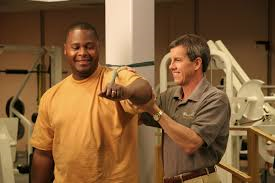
By Matt Gadient, PT, OCS, CSCS
Growing up I participated in a lot of sports from high school, college and summer recreation, and over the years I have collected several injuries. Currently I am seeing a physical therapist to help myself rehab a SLAP injury to my right shoulder (a cartilage tear in the labrum of the shoulder). This is what I have learned about being both a patient and PT working through injuries.
When in doubt use ice for acute pain and injuries, heat during the first 48 hours could increase swelling and ultimately more pain. If you or your doctor decide physical therapy could help you, look into the providers in the area (many have websites) and make sure to check with your insurance for coverage. After picking a physical therapy clinic give them a call to discuss availability and get answers to questions you might have, like location etc. Start out on the right foot and give yourself enough time to get to your appointment early to fill out the paperwork. Try and give your therapist a detailed and accurate description of why you are seeking their help. A good subjective history is very important and can significantly help your PT in determining what your issue might be. I once heard, “If you listen and ask the right questions your patients will often lead you to the right diagnosis without even putting your hand on them.”
Each therapy session is snap shot in time in regards to things like strength, range of motion and symptoms (typically pain). As a patient and a PT you are looking for a trend or progression over a number of visits/weeks. These patterns help us to locate and effectively treat the source of your complaint and allow you to notice the small gains that are happening as the weeks go by.
Help yourself and your PT by doing your prescribed home exercise program. I know they aren’t always easy, but they are there to help you. By doing the work it takes to get better outside of your appointments (home exercise program) you set up the time with the therapist to focus and troubleshoot some problem areas.
Last but not least stick to the plan. Work hard and you should expect to see and feel a change over time. As we figure out what works best for your body and as needs change your PT will be able to make changes or select a different treatment plan that fits best into your rehab process. Tissue takes time to heal and muscle strength and flexibility don’t happen overnight. Appreciate what may look like small gains. You have heard it before, patience is a virtue.
Remember your PT wants you to succeed and meet all your goals just as much as you.

Leave a Reply
You must be logged in to post a comment.